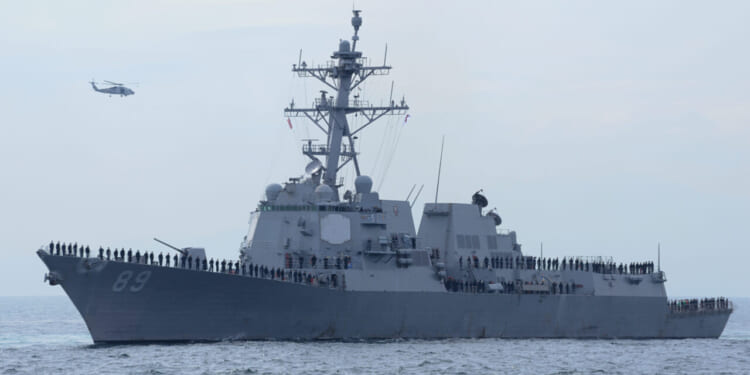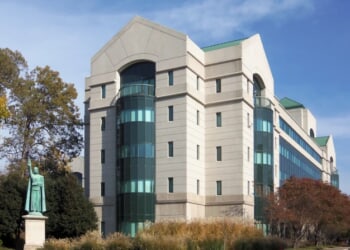SPY-6 can detect and engage a wide range of threats, including ballistic, hypersonic, and cruise missiles.
One of the US Navy’s most advanced destroyers successfully tested a cutting-edge radar that can detect and counter multiple targets on the battlefield.
SPY-6 is the most advanced radar ever installed on an Arleigh Burke-class destroyer.
SPY-6 Radar on a Destroyer
Recently, the USS Ted Stevens completed second builder’s sea trials while carrying a SPY-6(V)1 radar.
Built by Raytheon, the SPY-6(V)1 stands out due to its ability to simultaneously detect and counter incoming threats both in the air and at sea. The version of the radar is specifically designed for the Flight III version of the Arleigh Burke-class. It can detect and engage a wide range of threats, including ballistic, hypersonic, and cruise missiles, as well as deal with anti-air, anti-surface, and electronic warfare threats.
Naval combat is getting more complex with the advent of unmanned aerial systems and hypersonic missiles.
According to Raytheon, the SPY-6(V)1 “has 4 array faces, each containing 37 RMAs [radar module assemblies], providing full 360° situational awareness. . . [and] delivers greater range and sensitivity than previous-generation radars.”
The USS Ted Stevens is the second Arleigh Burke destroyer to get the SPY-6 radar. The USS Jack H. Lucas, another Flight III ship, was the first in 2023. These guided-missile destroyers make up the bulk of the Navy’s surface combatant fleet.
“Validated SPY-6(V)1 radar and Aegis Baseline 10 performance during trials. Multi-day Gulf trials confirmed readiness,” Raytheon stated about the sea trials.
Another great attribute of the SPY-6 is its ability to scale and be configured to any type of warship. The Navy plans to integrate the radar system into approximately 50 warships over the next few years.
Flight III Arleigh Burke-class destroyers sport a 5-inch (127mm) gun, a Phalanx CIWS self-defense system, two Mk 38 autocannons, two Mark 32 triple torpedo tubes, and the Mk 41 Vertical Launching System (VLS) with 96 cells for a variety of missiles, including anti-ship, air defense, land attack, and anti-ballistic munitions.
“There is no other radar with the surface maritime capabilities of SPY-6,” Wes Kremer, president of Raytheon Missiles & Defense, had said in the past. “SPY-6 is the most advanced naval radar in existence, and it will provide our military a giant leap forward in capability for decades to come.”
Eventually, the Navy will likely seek to install the detection system on more surface warships, including older Flight IIA Arleigh Burke-class ships.
A Family of Spies
Raytheon has developed four versions of the SPY-6.
SPY-6(V)1 is going to Flight III Arleigh Burke-class destroyers. It has four flat antenna faces, each with 37 radar module assemblies.
The SPY-6(V)2 Enterprise Air Surveillance Radar (EASR) is going to the America-class and Wasp-class amphibious assault ships, San Antonio-class amphibious transport dock ships, and Nimitz-class aircraft carriers. It has a rotating face with nine radar module assemblies.
The SPY-6(V)3 EASR is going to the Ford-class aircraft carriers and the Constellation-class guided-missile frigates. It has three fixed faces, each with nine radar module assemblies.
Finally, the SPY-6(V)4 EASR is going to older Flight IIA Arleigh Burke-class destroyers. It has four fixed faces, each with 24 radar module assemblies.
About the Author: Stavros Atlamazoglou
Stavros Atlamazoglou is a seasoned defense journalist specializing in special operations and a Hellenic Army veteran (national service with the 575th Marine Battalion and Army HQ). He holds a BA from the Johns Hopkins University and an MA from the Johns Hopkins’ School of Advanced International Studies (SAIS). His work has been featured in Business Insider, Sandboxx, and SOFREP.
Image: viper-zero / Shutterstock.com


















